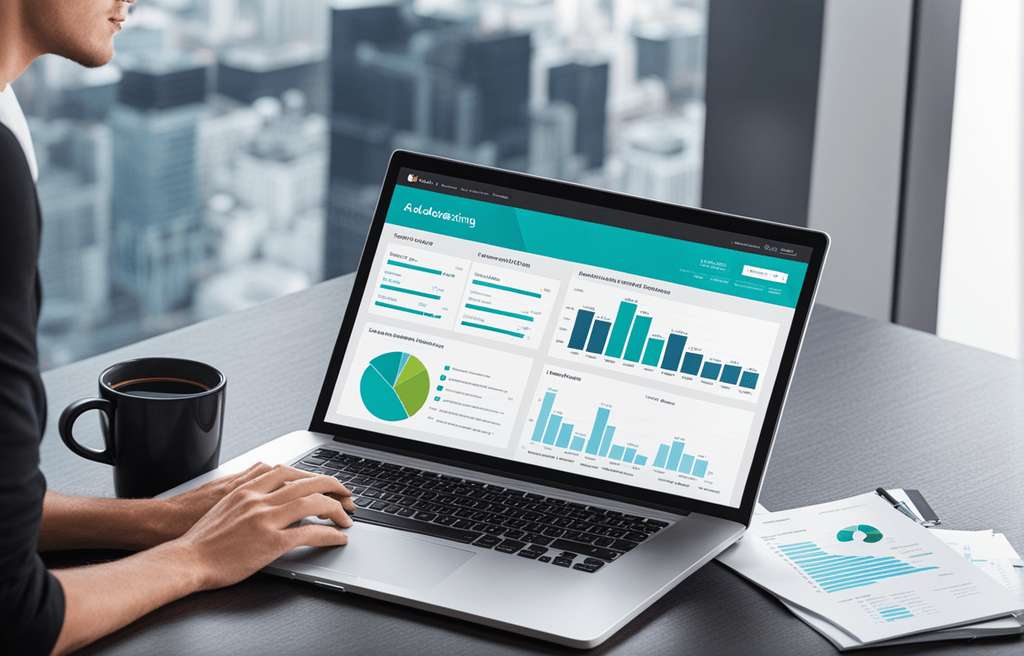
The best Competitive SEO Analysis Gaining Insights into Your Competitors 2023
Introduction
Competitive SEO analysis is a crucial process that provides valuable insights into your competitors’ strategies, strengths, and weaknesses By analyzing your competitors’ SEO efforts, you can identify opportunities to improve your own SEO performance and gain a competitive edge In this article, we will explore the significance of competitive SEO analysis and how it can help you stay ahead in the digital landscape
1 Identify Competitors
Start by identifying your direct and indirect competitors in the online space Analyze companies that target similar keywords and share a similar target audience as your business
2 Keyword Research and Ranking Analysis
Conduct in-depth keyword research to identify the keywords your competitors are targeting and ranking for Analyze their rankings in search engine results pages (SERPs) to understand their visibility for key search terms
Foundations of Keyword Research:
1.1 Identifying Relevant Terms:
- Begin with comprehensive keyword research to identify terms and phrases relevant to your content, industry, and target audience. Leverage tools such as Google Keyword Planner, SEMrush, or Ahrefs to uncover valuable insights.
1.2 Understanding User Intent:
- Dive into user intent associated with each keyword. Recognize the specific queries users are likely to have and tailor your content to provide valuable solutions.
2. Crafting an Effective Keyword Strategy:
2.1 Long-Tail Keywords:
- Explore long-tail keywords, which are more specific and often align with user queries. These can be instrumental in capturing niche audiences and improving conversion rates.
2.2 Competitor Analysis:
- Analyze the keywords targeted by your competitors. Identify gaps and opportunities in their strategies, allowing you to refine your own approach.
3. Strategic Keyword Placement:
3.1 On-Page Optimization:
- Strategically incorporate selected keywords into your website’s content, meta tags, headers, and other on-page elements. Maintain a natural and reader-friendly flow while optimizing for search engines.
3.2 URLs and Anchor Text:
- Integrate keywords into URLs and anchor text for internal and external links. This contributes to a coherent and SEO-friendly structure.
4. Continuous Monitoring and Analysis:
4.1 Rank Tracking Tools:
- Utilize rank tracking tools to monitor your website’s performance for specific keywords over time. Tools like Moz, Ahrefs, or Google Search Console provide valuable insights into your rankings.
4.2 Regular Assessments:
- Conduct regular assessments to identify fluctuations in rankings. Monitor how changes in content, algorithms, or competitor strategies impact your position in search engine results pages (SERPs).
5. Adapting to Algorithm Updates:
5.1 Stay Informed:
- Stay abreast of search engine algorithm updates. Major changes, such as Google’s core updates, can significantly influence ranking factors. Adapt your keyword strategy based on these shifts.
5.2 Algorithm-Friendly Content:
- Align your content with the factors search engines prioritize. This includes factors like page speed, mobile-friendliness, and high-quality, relevant content.
6. User Engagement and Click-Through Rates:
6.1 Appealing Meta Titles and Descriptions:
- Craft compelling meta titles and descriptions that not only include keywords but also entice users to click. Higher click-through rates positively influence rankings.
6.2 User Experience:
- Prioritize user experience. A positive user experience, marked by low bounce rates and high time on page, can indirectly impact your rankings.
7. Analyzing Keyword Performance Metrics:
7.1 Conversion Tracking:
- Integrate conversion tracking to assess how well specific keywords contribute to your business goals. Understand which keywords are driving valuable actions, such as purchases or sign-ups.
7.2 Evaluate Bounce Rates:
- Evaluate bounce rates associated with specific keywords. High bounce rates may indicate a misalignment between user intent and your content.
8. Iterative Optimization:
8.1 Refine and Expand:
- Iterate and optimize your keyword strategy based on the insights gained from ranking analysis. Refine underperforming keywords and expand your focus on those showing promising results.
8.2 Content Updates:
- Regularly update and enhance your content. This not only keeps it relevant to evolving user needs but also signals to search engines that your content is current and valuable.
9. Local SEO Considerations:
9.1 Location-Specific Keywords:
- If applicable, incorporate location-specific keywords to enhance local SEO. This is crucial for businesses serving specific geographic areas.
9.2 Google My Business Optimization:
- Optimize your Google My Business listing with accurate and consistent business information, reviews, and relevant keywords. Local searches often yield results based on proximity and relevance.
10. Competitive Benchmarking:
10.1 Benchmark Against Competitors: – Regularly benchmark your keyword performance against competitors. Identify areas where you can outperform and capitalize on opportunities for improvement.
10.2 Differentiation Strategies: – Differentiate your content by addressing unique user needs or providing more comprehensive information. This can contribute to a competitive edge in search rankings.
3 Analyze On-Page SEO
Examine your competitors’ on-page SEO elements, such as tags, meta descriptions, and heading tags Identify how they optimize their content for relevant keywords and user intent

4 Backlink Profile Analysis
Study your competitors’ backlink profiles to understand the quantity and quality of their inbound links Identify potential link-building opportunities and determine the sources of their most valuable backlinks
Understanding Backlink Significance:
1.1 Definition of Backlinks:
- Backlinks, also known as inbound links or incoming links, are links from external websites to your own. They play a pivotal role in search engine algorithms, serving as a vote of confidence and authority for your content.
1.2 Quality Over Quantity:
- Quality often trumps quantity when it comes to backlinks. High-quality, authoritative backlinks from reputable sources hold more weight in boosting your website’s credibility.
2. The Role of Backlink Profile:
2.1 Comprehensive Web Presence:
- A robust backlink profile contributes to a comprehensive web presence. It signifies that other websites consider your content valuable and relevant enough to link to.
2.2 Search Engine Trust:
- Search engines, such as Google, use backlinks as a trust signal. Websites with a diverse and authoritative backlink profile are more likely to be deemed trustworthy, impacting search engine rankings.
3. Backlink Profile Analysis Process:
3.1 Backlink Tools:
- Utilize specialized tools for backlink analysis, such as Ahrefs, Moz, SEMrush, or Google Search Console. These tools provide a wealth of data regarding the links pointing to your site.
3.2 Anchor Text Analysis:
- Examine the anchor text used in backlinks. Diverse and relevant anchor text contributes to a natural link profile. Avoid over-optimized anchor text, as it may be flagged by search engines.
4. Authority and Relevance Assessment:
4.1 Domain Authority:
- Evaluate the domain authority of websites linking to you. Backlinks from high-authority domains carry more weight in influencing your own authority and search engine rankings.
4.2 Relevance of Sources:
- Assess the relevance of the websites linking to you. Links from sources within your industry or niche are more valuable in signaling to search engines that your content is contextually significant.
5. Link Diversity:
5.1 Diverse Link Sources:
- A diverse backlink profile includes links from various sources, such as blogs, news articles, forums, and authoritative websites. This diversity enhances the credibility of your link profile.
5.2 Avoiding Spammy Links:
- Identify and disavow spammy or low-quality links. Search engines may penalize websites with a high number of spammy backlinks. Tools like Google’s Disavow Tool can help manage this.
6. Historical Backlink Trends:
6.1 Historical Data Analysis:
- Analyze historical backlink data to identify trends. Changes in the number and quality of backlinks over time can provide insights into the effectiveness of your content and outreach strategies.
6.2 Link Velocity:
- Monitor link velocity, which refers to the rate at which new backlinks are acquired. Sudden spikes or drops may warrant further investigation and adjustments to your SEO strategy.
7. Competitor Benchmarking:
7.1 Benchmark Against Competitors:
- Compare your backlink profile with that of your competitors. Identify areas where you can strengthen your profile, and learn from strategies employed by successful competitors.
7.2 Identify Link Gaps:
- Recognize gaps in your backlink profile compared to competitors. This can unveil opportunities for outreach, content creation, or collaboration within your industry.
8. Link Building Strategies:
8.1 Strategic Outreach:
- Based on your backlink analysis, develop targeted outreach strategies. Reach out to relevant websites within your niche to build quality backlinks through collaborations, guest posts, or mentions.
8.2 Content Optimization:
- Optimize your existing content to make it more link-worthy. High-quality, informative, and unique content is more likely to attract natural backlinks from other websites.
9. Risk Mitigation:
9.1 Identify Toxic Backlinks:
- Identify and disavow toxic backlinks that may harm your website’s reputation. Tools can help pinpoint links from spammy or suspicious sources.
9.2 Google Search Console Alerts:
- Set up alerts in Google Search Console to receive notifications about potential issues with your backlink profile. Address these promptly to avoid penalties.
5 Content Strategy Evaluation
Assess your competitors’ content strategy to determine the type of content they publish, the frequency of updates, and how they engage their target audience Identify content gaps and opportunities to create more valuable and comprehensive content

6 Social Media Presence
Examine your competitors’ social media presence and engagement Evaluate their activity, follower count, and the type of content they share to gain insights into their social media marketing strategy
Define Your Brand Voice and Identity:
1.1 Consistent Branding:
- Establish a consistent brand identity across all social media platforms. This includes using a unified profile picture, cover photo, and bio that reflect your brand’s visual and messaging elements.
1.2 Define Your Tone:
- Develop a consistent tone for your brand’s communication. Whether it’s friendly, informative, or humorous, maintaining a consistent tone helps create a recognizable brand personality.
2. Choose the Right Platforms:
2.1 Audience Alignment:
- Identify the social media platforms that align best with your target audience. Different platforms cater to different demographics, so choose wisely based on your business goals and audience preferences.
2.2 Quality Over Quantity:
- Rather than being present on every platform, focus on a select few where your audience is most active. Quality engagement on a few platforms is more effective than a scattered and diluted presence.
3. Content is King:
3.1 Tailor Content to Each Platform:
- Customize your content for each social media platform. What works on Instagram may not resonate on LinkedIn. Tailor your content to fit the unique characteristics and audience expectations of each platform.
3.2 Visual Appeal:
- Visual content often performs exceptionally well on social media. Incorporate eye-catching graphics, images, and videos to capture attention and convey your brand message effectively.
4. Consistent Posting Schedule:
4.1 Regular Updates:
- Maintain a consistent posting schedule to keep your audience engaged. Regular updates signal that your brand is active and invested in providing valuable content.
4.2 Optimal Posting Times:
- Identify the optimal times for posting on each platform. Utilize analytics tools to understand when your audience is most active and schedule posts accordingly.
5. Engage and Interact:
5.1 Respond to Comments:
- Actively respond to comments and messages. Engaging with your audience fosters a sense of community and shows that you value their input.
5.2 Participate in Conversations:
- Join relevant conversations within your industry or community. This not only increases your visibility but also positions your brand as an active and informed participant in discussions.
6. Leverage Visual Branding:
6.1 Consistent Visual Elements:
- Implement consistent visual branding elements such as colors, fonts, and logos across your social media profiles. This strengthens brand recognition and reinforces your visual identity.
6.2 Storytelling Through Imagery:
- Use visual storytelling to convey your brand message. Share behind-the-scenes glimpses, user-generated content, and visually compelling narratives to connect with your audience emotionally.
7. Social Media Advertising:
7.1 Targeted Advertising:
- Utilize targeted advertising options on platforms like Facebook, Instagram, and LinkedIn. This allows you to reach specific demographics and maximize the impact of your advertising budget.
7.2 A/B Testing:
- Experiment with different ad formats and messaging through A/B testing. Analyze the performance metrics to refine your advertising strategy and optimize for better results.
8. Influencer Collaborations:
8.1 Align with Your Niche:
- Collaborate with influencers whose audience aligns with your target demographic. Influencers can help amplify your brand message and reach a wider audience with credibility.
8.2 Authentic Partnerships:
- Foster authentic partnerships with influencers. Ensure that collaborations feel genuine and align with both your brand values and the influencer’s personal brand.
9. Analytics and Performance Tracking:
9.1 Monitor Key Metrics:
- Use analytics tools provided by each platform to monitor key performance metrics. Track engagement, reach, and conversion data to assess the effectiveness of your social media efforts.
9.2 Adapt Based on Insights:
- Regularly review analytics data and adapt your strategy based on insights. Identify successful content types, posting times, and engagement patterns to refine your approach.
10. Crisis Management and Responsiveness:
10.1 Proactive Approach: – Be prepared for potential crises or negative feedback. Develop a crisis management plan and respond promptly and professionally to address any concerns.
10.2 Transparency and Authenticity: – In times of challenges, prioritize transparency and authenticity. Honest communication can strengthen your brand’s credibility and build trust with your audience.
Define Your Brand Voice and Identity:
1.1 Consistent Branding:
- Establish a consistent brand identity across all social media platforms. This includes using a unified profile picture, cover photo, and bio that reflect your brand’s visual and messaging elements.
1.2 Define Your Tone:
- Develop a consistent tone for your brand’s communication. Whether it’s friendly, informative, or humorous, maintaining a consistent tone helps create a recognizable brand personality.
2. Choose the Right Platforms:
2.1 Audience Alignment:
- Identify the social media platforms that align best with your target audience. Different platforms cater to different demographics, so choose wisely based on your business goals and audience preferences.
2.2 Quality Over Quantity:
- Rather than being present on every platform, focus on a select few where your audience is most active. Quality engagement on a few platforms is more effective than a scattered and diluted presence.
3. Content is King:
3.1 Tailor Content to Each Platform:
- Customize your content for each social media platform. What works on Instagram may not resonate on LinkedIn. Tailor your content to fit the unique characteristics and audience expectations of each platform.
3.2 Visual Appeal:
- Visual content often performs exceptionally well on social media. Incorporate eye-catching graphics, images, and videos to capture attention and convey your brand message effectively.
4. Consistent Posting Schedule:
4.1 Regular Updates:
- Maintain a consistent posting schedule to keep your audience engaged. Regular updates signal that your brand is active and invested in providing valuable content.
4.2 Optimal Posting Times:
- Identify the optimal times for posting on each platform. Utilize analytics tools to understand when your audience is most active and schedule posts accordingly.
5. Engage and Interact:
5.1 Respond to Comments:
- Actively respond to comments and messages. Engaging with your audience fosters a sense of community and shows that you value their input.
5.2 Participate in Conversations:
- Join relevant conversations within your industry or community. This not only increases your visibility but also positions your brand as an active and informed participant in discussions.
6. Leverage Visual Branding:
6.1 Consistent Visual Elements:
- Implement consistent visual branding elements such as colors, fonts, and logos across your social media profiles. This strengthens brand recognition and reinforces your visual identity.
6.2 Storytelling Through Imagery:
- Use visual storytelling to convey your brand message. Share behind-the-scenes glimpses, user-generated content, and visually compelling narratives to connect with your audience emotionally.
7. Social Media Advertising:
7.1 Targeted Advertising:
- Utilize targeted advertising options on platforms like Facebook, Instagram, and LinkedIn. This allows you to reach specific demographics and maximize the impact of your advertising budget.
7.2 A/B Testing:
- Experiment with different ad formats and messaging through A/B testing. Analyze the performance metrics to refine your advertising strategy and optimize for better results.
8. Influencer Collaborations:
8.1 Align with Your Niche:
- Collaborate with influencers whose audience aligns with your target demographic. Influencers can help amplify your brand message and reach a wider audience with credibility.
8.2 Authentic Partnerships:
- Foster authentic partnerships with influencers. Ensure that collaborations feel genuine and align with both your brand values and the influencer’s personal brand.
9. Analytics and Performance Tracking:
9.1 Monitor Key Metrics:
- Use analytics tools provided by each platform to monitor key performance metrics. Track engagement, reach, and conversion data to assess the effectiveness of your social media efforts.
9.2 Adapt Based on Insights:
- Regularly review analytics data and adapt your strategy based on insights. Identify successful content types, posting times, and engagement patterns to refine your approach.
10. Crisis Management and Responsiveness:
10.1 Proactive Approach: – Be prepared for potential crises or negative feedback. Develop a crisis management plan and respond promptly and professionally to address any concerns.
10.2 Transparency and Authenticity: – In times of challenges, prioritize transparency and authenticity. Honest communication can strengthen your brand’s credibility and build trust with your audience.
Define Your Brand Voice and Identity:1.1 Consistent Branding:
7 Mobile Optimization
Analyze your competitors’ mobile optimization efforts Check the mobile responsiveness of their websites and their performance in mobile search results
8 User Experience (UX) Evaluation
Assess the user experience of your competitors’ websites Analyze their website speed, navigation, and overall user-friendliness to identify areas for improvement in your own UX
9 Paid Advertising Analysis
Observe your competitors’ paid advertising efforts, such as Google Ads and social media ads Determine their ad copy, keywords, and target audience to refine your paid advertising strategy

10 Learn from Successes and Mistakes
Based on your analysis, learn from your competitors’ successes and mistakes Implement effective strategies they use while avoiding any pitfalls that could harm your SEO performance
Conclusion
Competitive SEO analysis is a valuable process that offers actionable insights into your competitors’ strategies, keywords, backlinks, content, social media, and more By understanding your competitors’ strengths and weaknesses, you can refine your SEO strategy, capitalize on opportunities, and gain a competitive advantage in the digital landscape Continuous monitoring and analysis of your competitors’ SEO efforts will help you stay ahead and achieve success in your online endeavors
One Comment